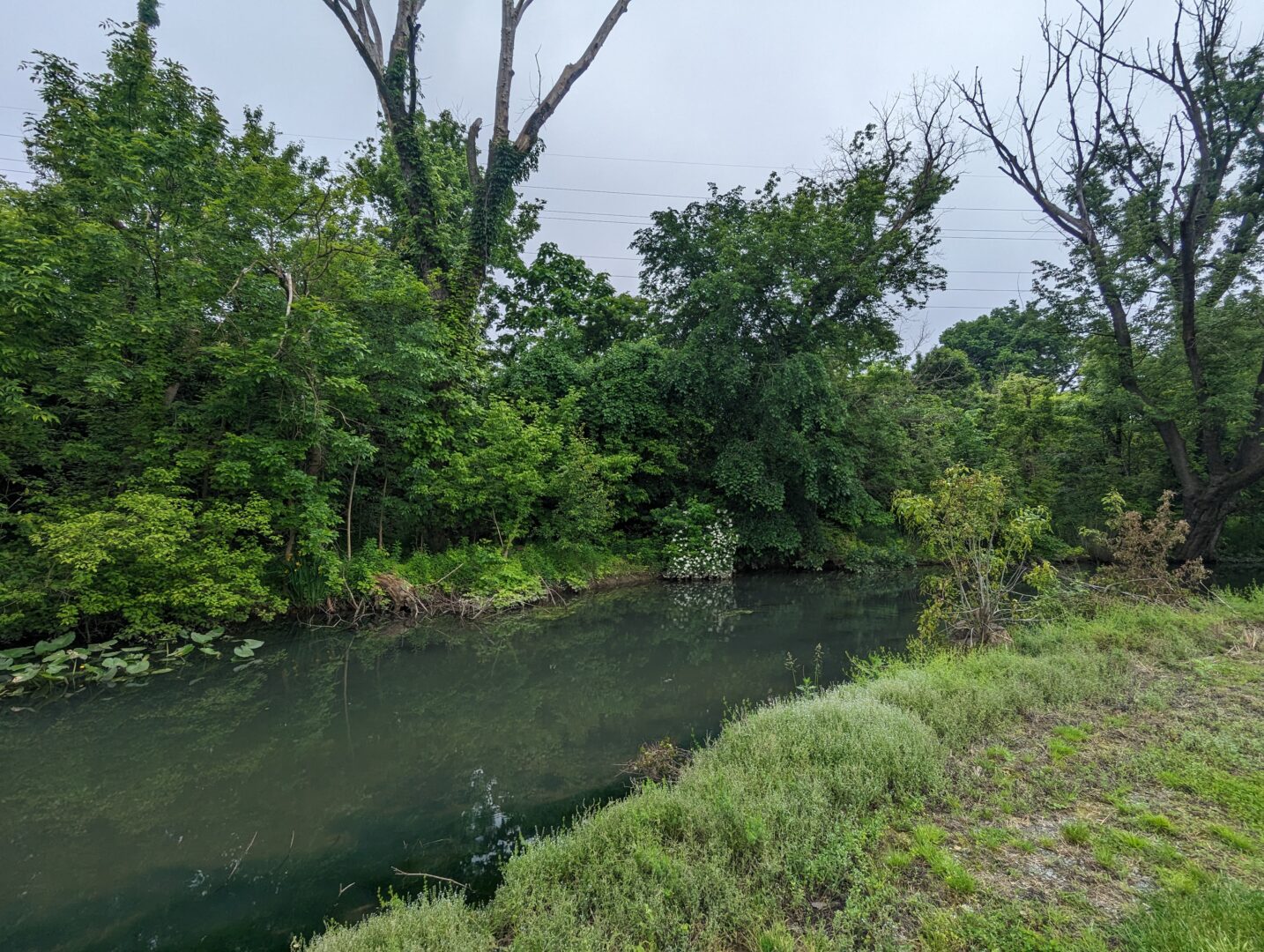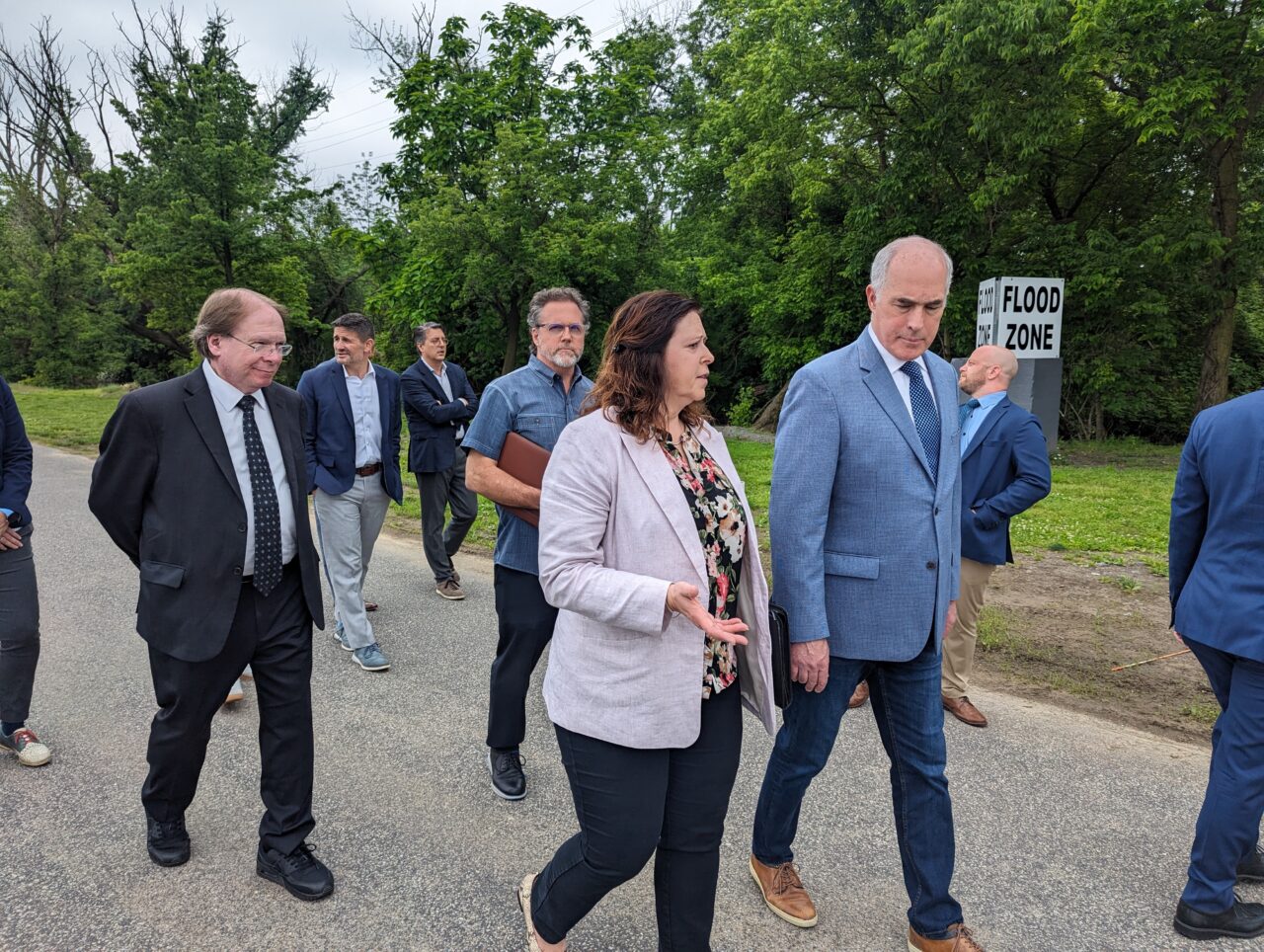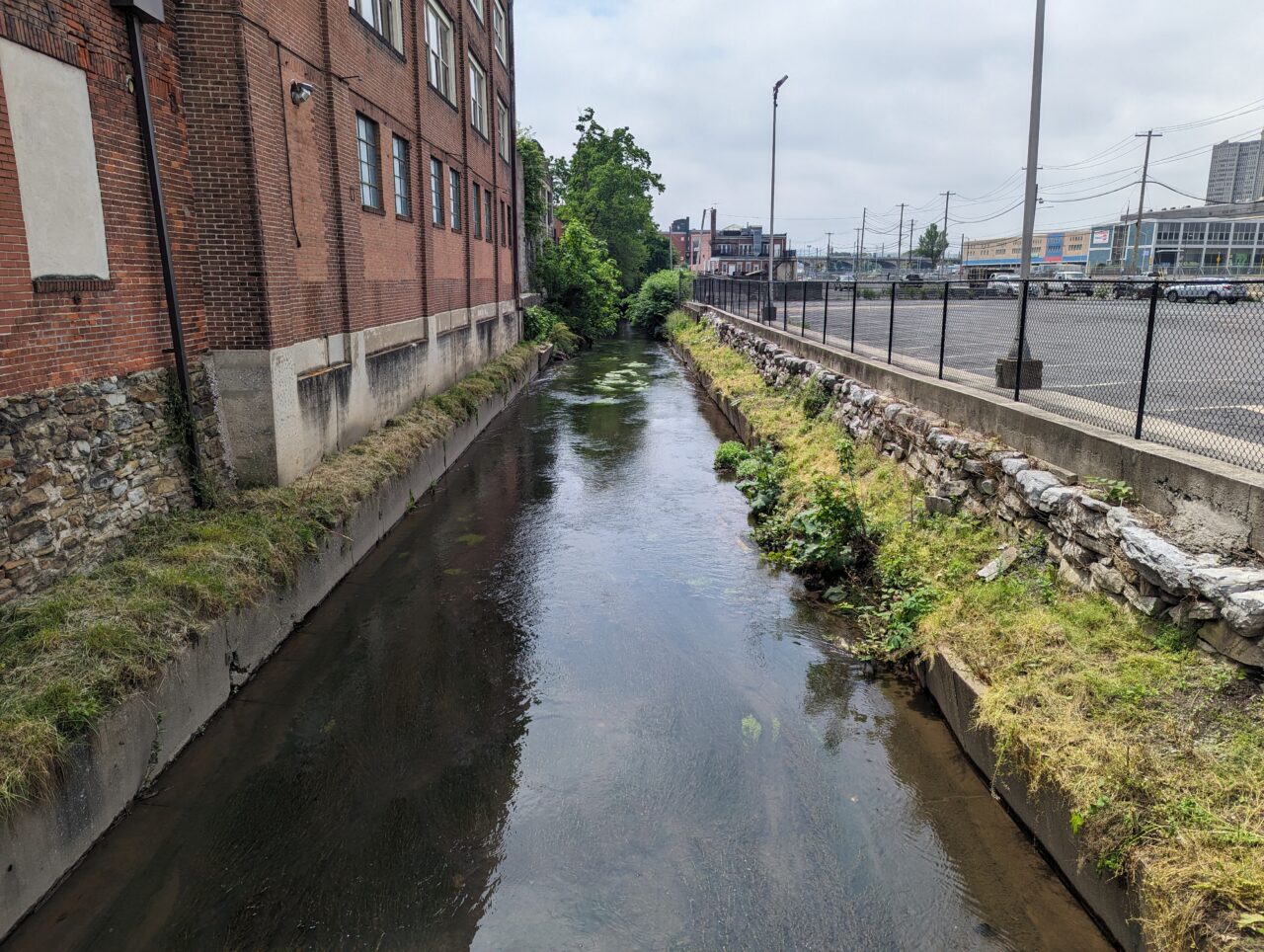
Paxton Creek runs behind the Farm Show Complex in Harrisburg and can flood parking lots and roads during heavy storms.
Rachel McDevitt / StateImpact Pennsylvania


Paxton Creek runs behind the Farm Show Complex in Harrisburg and can flood parking lots and roads during heavy storms.
Rachel McDevitt / StateImpact Pennsylvania

Rachel McDevitt / StateImpact Pennsylvania
Paxton Creek runs behind the Farm Show Complex in Harrisburg and can flood parking lots and roads during heavy storms.
More than one million dollars in federal grants could help reduce persistent flooding in Harrisburg.
Congress has awarded two grants to address issues along Paxton Creek, which runs roughly parallel to Cameron Street.
Capital Region Water is getting $500,000 to buy right-of-ways for a new wastewater collection line. The Harrisburg Redevelopment Authority is getting $750,000 to design and engineer a creek restoration project.
U.S. Sen. Bob Casey (D-Pa.) announced the grants at the Farm Show Complex, which is threatened when Paxton Creek overflows.
Casey said reducing the risk of flooding can save lives and livelihoods.
“There’s no question we’re going to be facing, in some cases, catastrophic results emanating from climate change. We’ve got to take action now. We can’t just sit on our hands and hope it won’t happen,” Casey said.

Rachel McDevitt / StateImpact Pennsylvania
Capital Region Water CEO Charlotte Katzenmoyer shows U.S. Senator Bob Casey around flood-prone areas along Paxton Creek in Harrisburg on May 20, 2024.
Pennsylvania is expected to see more intense storms that can cause flash flooding as the climate changes.
Paxton Creek was shunted into a paved channel decades ago. Running right next to it is the city’s main line for collecting stormwater and sewage, called an interceptor. It was built in 1902, and hasn’t been updated since. About 80% of the collection system was installed before 1940, according to CRW.
About 60% of Harrisburg is served by a combined sewer system, meaning stormwater and sewage run through the same pipes. When rain is heavy, that overwhelms the system, causing overflows into Paxton Creek and the Susquehanna River. Paxton Creek floods surrounding streets.
“These overflows or releases are not an operational choice. Our infrastructure is undersized and overwhelmed,” CRW CEO Charlotte Katzenmoyer said.
Katzenmoyer said that’s partly due to the increase in buildings and paved surfaces in Harrisburg and surrounding townships.
If the creek is given more space to move naturally and is bordered by greenspaces and wetlands, Katzenmoyer said, that can alleviate flooding.
Katzenmoyer said they are using historical rainfall totals and projections to design an interceptor that can handle future storms.

Rachel McDevitt / StateImpact Pennsylvania
Paxton Creek was diverted into a narrow, paved channel decades ago. Capital Region Water’s main wastewater collection pipe runs underneath parking lots on the right of this photo, taken from Walnut St. on May 20, 2024.
Under a consent decree with the U.S Department of Justice and Environmental Protection Agency, Capital Region Water must submit a long-term control plan for wastewater by the end of this year. The agreement was made in 2015 to address compliance issues with controlling wastewater overflows and water treatment systems. The order was modified last year.
The federal grants are just the beginning of a process to mitigate flooding.
Harrisburg Mayor Wanda Williams said residents will not see the effects of the money at first.
“All told, this is literally 1% of what could be a $100 million project when it’s all said and done. But that 1% may be the most important, because it gets us off the ground,” Williams said.
Katzenmoyer said she hopes there will be more opportunities for federal and state funding, to lower the burden on ratepayers.
“We’re facing $400-450 million of investment that we need to make because of the deferred maintenance–nothing’s been done to facilities like this in decades,” Katzenmoyer said.
StateImpact Pennsylvania is a collaboration among WITF, WHYY, and the Allegheny Front. Reporters Reid Frazier, Rachel McDevitt and Susan Phillips cover the commonwealth’s energy economy. Read their reports on this site, and hear them on public radio stations across Pennsylvania.
(listed by story count)
StateImpact Pennsylvania is a collaboration among WITF, WHYY, and the Allegheny Front. Reporters Reid Frazier, Rachel McDevitt and Susan Phillips cover the commonwealth’s energy economy. Read their reports on this site, and hear them on public radio stations across Pennsylvania.
Climate Solutions, a collaboration of news organizations, educational institutions and a theater company, uses engagement, education and storytelling to help central Pennsylvanians toward climate change literacy, resilience and adaptation. Our work will amplify how people are finding solutions to the challenges presented by a warming world.